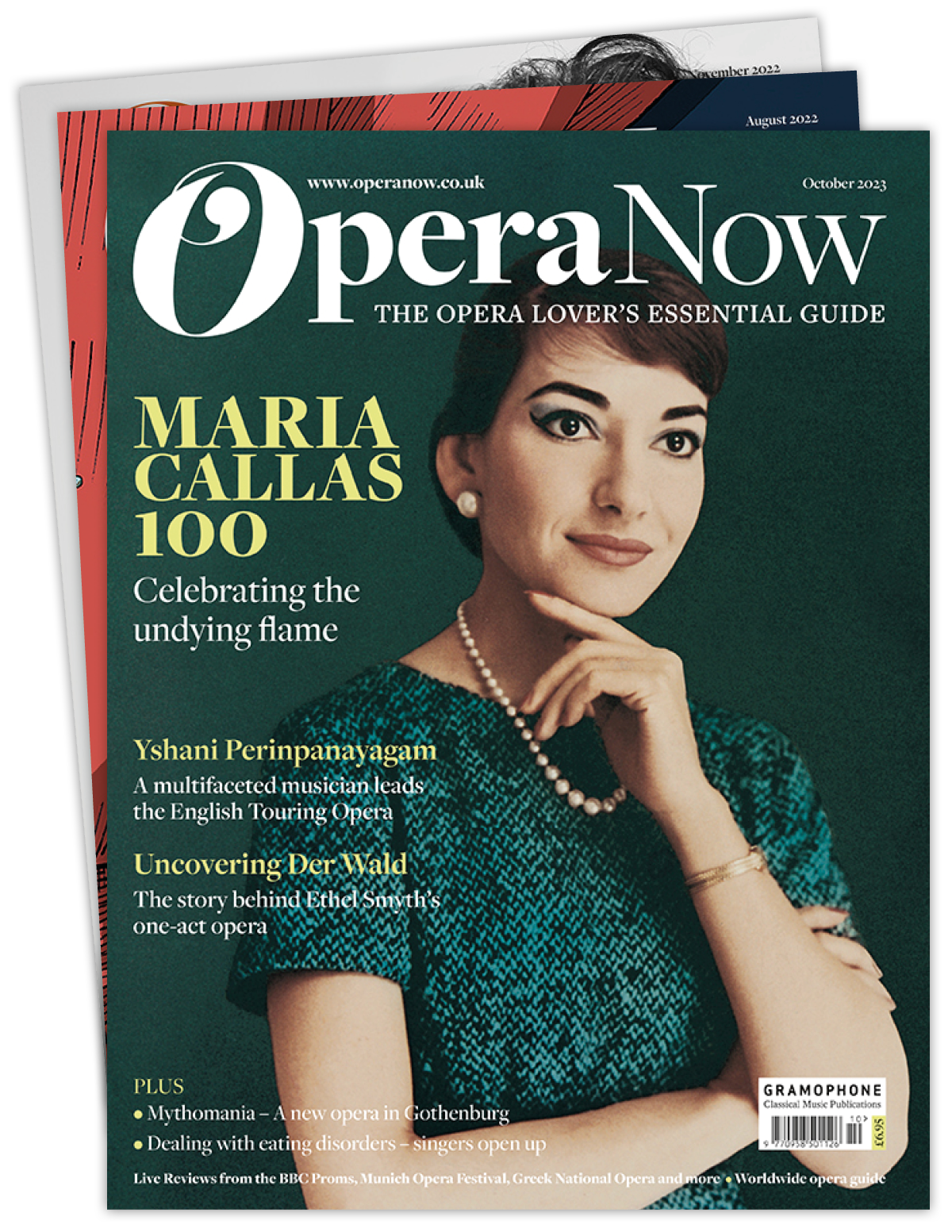Strauss: Die Frau ohne Schatten at San Francisco Opera | Live Review
Thomas May
Thursday, June 29, 2023
Depth and dimension run in tandem with the magic of David Hockney's iconic scenery
*****

Camilla Nylund as the Empress, Nina Stemme as the Dyer's Wife, Johan Reuter as Barak, and David Butt Philip as the Emperor | Photo: Cory Weaver
To experience a production that fires on all the main fronts – casting, conductor and orchestra, staging and visuals – is reason enough for immense gratitude. But when the opera being produced is one as complex and demanding as Die Frau ohne Schatten, it seems nothing short of miraculous.
San Francisco Opera already made history with this most extravagantly layered of the Strauss-Hofmannsthal collaborations by presenting the first American production in 1959 (four decades after its premiere in Vienna). But even apart from that milestone, FROSCH’s return to San Francisco is destined to rank among the peak achievements in the company’s collective memory.
This also marked the first time in three and a half decades that San Francisco Opera has dared to tackle Strauss’s operatic behemoth. The production David Hockney originally designed for the Royal Opera House in 1992 was chosen for this revival. The artist’s intensely colourful cutout patterns combined whimsy and surreal fantasy, evoking illustrations to a children’s book really intended for grownups. Hockney’s imagery, in harmony with the lighting design (originally by Alan Barrett but adapted for this revival by Justin A. Partier), readily navigated the differentiated realms of spirits and mortals that Hofmannsthal’s libretto maps out – as varied as the scenography of Das Rheingold or the final scene of Goethe’s Faust. The late Ian Falconer’s costumes emphasised the differences in station of the working-class humans from the rest while likewise enhancing the set design’s vivid, almost synaesthetic palette – the changing colours almost suggesting tonalities of their own in counterpoint to Strauss’s.

This production of Frau Ohne Schatten was originally designed by David Hockney for the Royal Opera House in 1992 | Photo: Cory Weaver
Hockney’s production provides a framework for the fairy-tale atmosphere but leaves ample room to keep the opera from being reduced to this. Indeed, what’s especially moving about San Francisco Opera’s staging is the tension between the childlike wonder and make-believe of its visual realisation and the complex human relationships portrayed by an extraordinarily well-matched cast. Stage director Roy Rallo wisely steered a minimalist course to keep the focus on the singers.
Camilla Nylund reaffirmed her status as a Straussian of the first order with a multifaceted portrayal of the Empress enriched by the luminous, precise focus of her instrument. She made the process of her character’s humanisation through compassion believable, evolving from the contingent joy her ecstatic vocal line in the opening scene expresses through guilt-ridden self-doubt to the full, accepting awareness of the opera’s climactic scene. Linda Watson’s thrillingly maleficent Nurse radiated a harsh gleam, vocally and theatrically, that served as a potent foil and culminating in fully unleashed rage during her exit scene. Though he didn’t entirely command the Emperor’s impossibly high-lying heldentenor part, David Butt Philip brought out the ardent, lustrous beauty of Strauss’s writing. The Danish bass-baritone Johan Reuter gave an especially winning interpretation of Barak, emphasising his qualities of warmth and empathy without cheap notes of sentimentality.

Linda Watson as the Nurse and Stefan Egerstrom as the Spirit Messenger | Photo: Cory Weaver
The titular woman who lacks a shadow – who is on a quest to become fully human, according to the elaborate symbolism of Hofmannsthal’s syncretic libretto – refers to the Empress, but the Dyer’s Wife became the real protagonist through Nina Stemme’s thoroughly involving depiction. She illuminated the opera’s theme of imponderable despair that must be confronted through experience. Stemme’s unflagging vocal resources gave the character depth and dimension, obliterating cliches of an embittered shrew. Her final transformation became the emotional key to reveal the significance of the opera’s journey – at least as much so as the Empress’s act of sacrifice. The many secondary roles were well cast and the various adult and children’s choirs on excellent form (prepared by John Keene).
The other major character is of course Strauss’s vastly expanded orchestra (requiring a special expansion of the War Memorial Opera House pit). Sir Donald Runnicles was the indispensable captain – incredibly, this was the first FROSCH for the veteran Straussian – steering the way with unwavering intention. Runnicles braved the score’s thick, polyphonic textures with clarity of purpose. His palpably intense rapport with the musicians drew out long-limbed skeins of flowing lyricism. Sensitivity to details of timbre and harmony went hand-in-hand with a firm grasp of the piece’s architecture, the echoing symmetries and parallels that reinforce Hofmannsthal’s literary construction. Such resounding confidence in Strauss’s idiom contributed immeasurably to the success of this transportive production.








